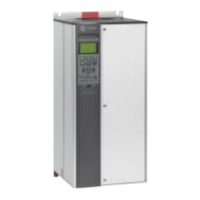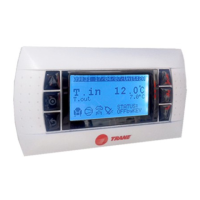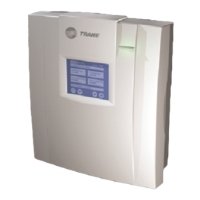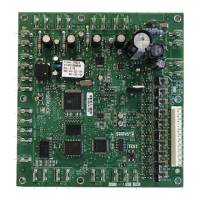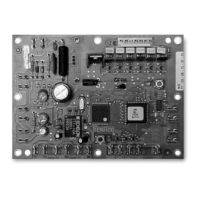3-40 Ramp 1 Type
Option: Function:
Select the ramp type, depending on requirements for acceleration/de-
celeration.
A linear ramp will give constant acceleration during ramping. An S-ramp
will give non-linear acceleration, compensating for jerk in the applica-
tion.
[0] * Linear
[1] S-ramp Const Jerk Acceleration with lowest possible jerk.
[2] S-ramp Const Time S-ramp based on the values set in par.3-41
Ramp 1 Ramp up Time and
par.3-42
Ramp 1 Ramp Down Time.
Note
If S-ramp [1] is selected and the reference during ramping is changed the ramp time may be prolonged in order
to realize a jerk free movement which may result in a longer start or stop time.
Additional adjustment of the S-ramp ratios or switching initiators may be necessary.
3-41 Ramp 1 Ramp up Time
Range: Function:
3.00 s* [0.01 - 3600.00 s] Enter the ramp-up time, i.e. the acceleration time from 0 RPM to par.
1-25
Motor Nominal Speed. Choose a ramp-up time such that the output
current does not exceed the current limit in par.4-18
Current Limit during
ramping. See ramp-down time in par.3-42
Ramp 1 Ramp Down Time.
par
.3 − 41 =
t
acc
×
n
norm
par
.1 − 25
ref
rpm
s
3-42 Ramp 1 Ramp Down Time
Range: Function:
3.00 s* [0.01 - 3600.00 s] Enter the ramp-down time, i.e. the deceleration time from par.1-25
Motor
Nominal Speed to 0 RPM. Choose a ramp-down time such that no over-
voltage arises in the inverter due to regenerative operation of the motor,
and such that the generated current does not exceed the current limit set
in par.4-18
Current Limit. See ramp-up time in par.3-41 Ramp 1 Ramp up
Time.
par
.3 − 42 =
t
dec
×
n
norm
par
.1 − 25
ref
rpm
s
Parameter Description
TR200 Programming Guide 77

